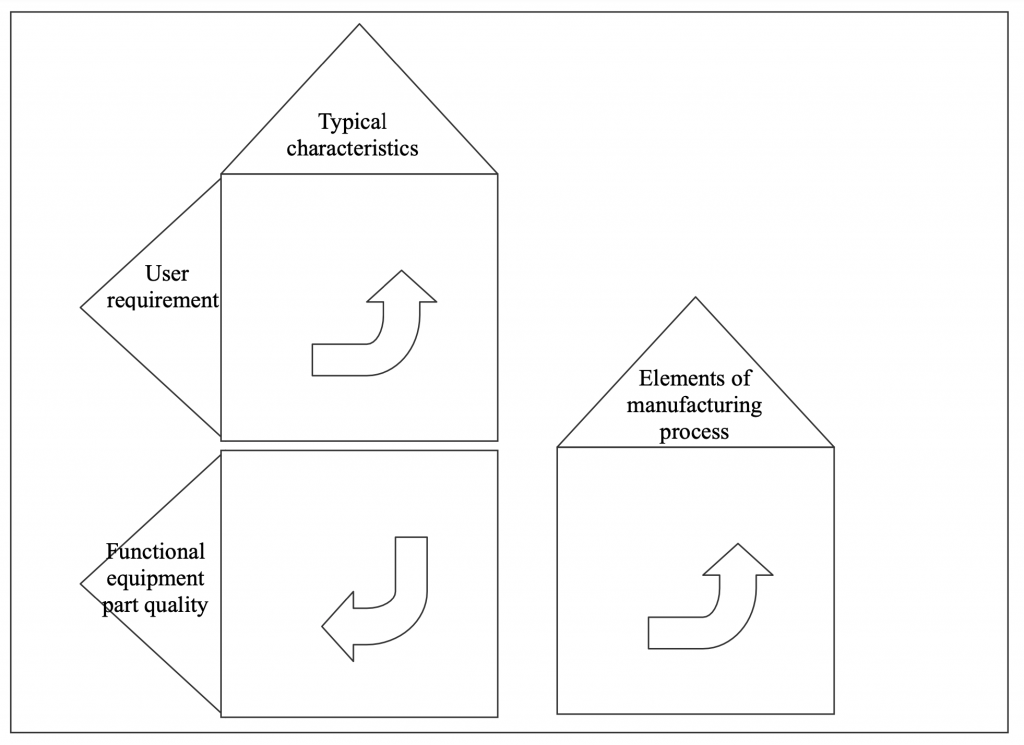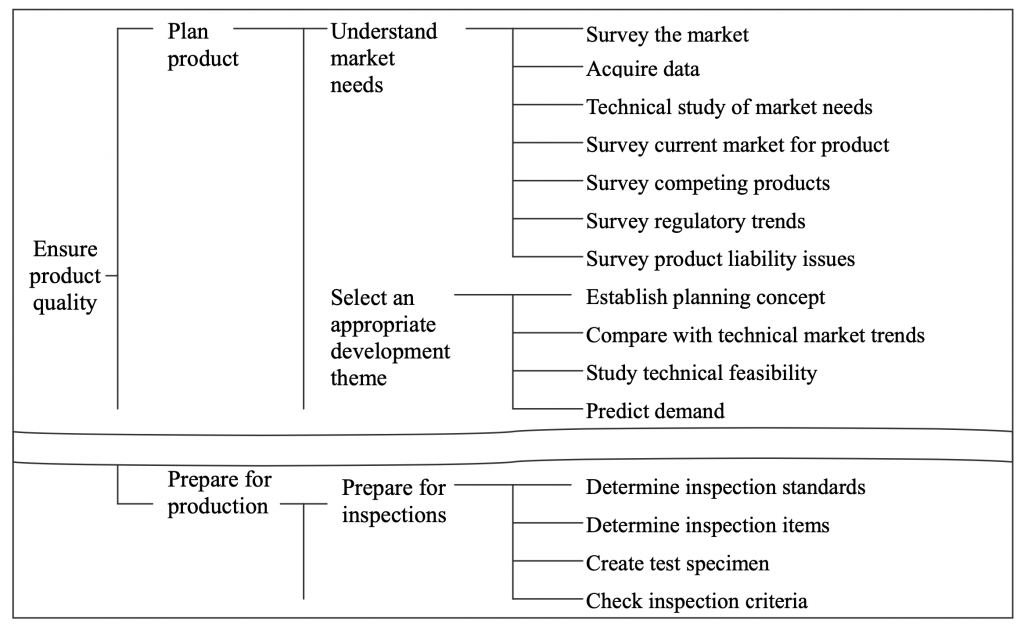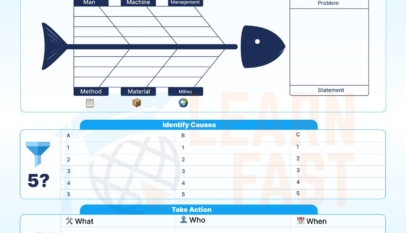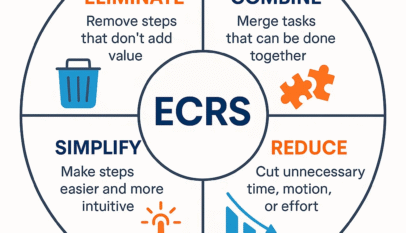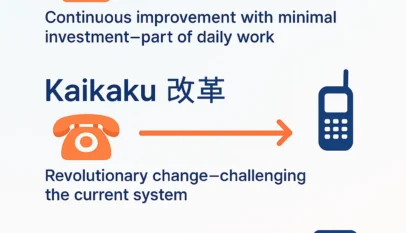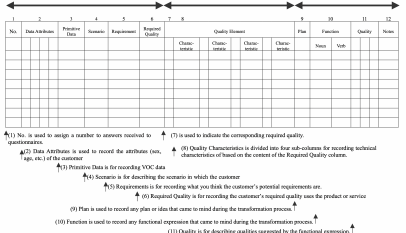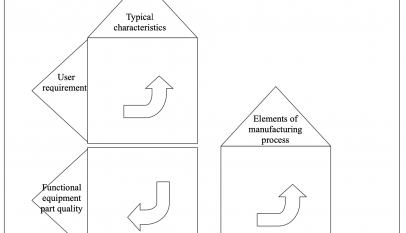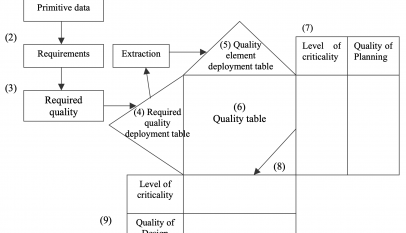Quality function deployment is a concept that originated in Japan, and although it is known worldwide by the acronym QFD, the name quality function deployment is a direct translation of the original Japanese name: hinshitsu kinô tenkai. It was originally proposed in 1978 by Drs. Yôji Akao and Shigeru Mizuno, and adopted for testing by numerous interested businesses. The results showed that QFD was an effective concept for the development of new products and for affecting quality assurance from the design stage. The success of QFD in Japan led to its introduction overseas, and it is now known worldwide.
Quality deployment methodology is used by many companies in the implementation of quality assurance from the design stage of product development. The implementation of QFD involves the creation of what are called required quality deployment tables from linguistic data about customer opinions, quality characteristic deployment tables from the product’s technical characteristics, and quality tables, which are a matrix created from required quality deployment and quality characteristic deployment tables. Quality assurance is implemented using these tables.
Although the original objective of QFD was conceived of as both new product development and the implementation of quality assurance from the design stage of new product development, it is used most often now as was originally intended in the development of new products. A look at how QFD has been used in the past shows that, just like the use of experimental design and Pareto diagrams, QFD generated unexpectedly good results when applied to quality assurance, even though it was not originally conceived as a methodology for QA itself. In fact, the first successes of QFD came not from product development but from its application to quality assurance.
In its widest sense, QFD has come to stand both for QFD as used in quality assurance and for QFD as used in product development, but there are times when we feel that QFD in this narrower definition has been lost. Still, it is important to take an organic approach to QFD that includes both approaches and it should be understood that QFD applied only to quality assurance is not sufficient.
Irrespective of whether the objective of QFD implementation is perceived as laying in product development or in quality assurance, these two are like the wheels at either end of an axle: both are necessary for forward progress, and neither is complete without the other.
Quality deployment involves the detailed analysis of the component elements of a product’s quality and the establishment of a network of quality component elements. The narrow sense of QFD involves the detailed composition of the business functions that form quality. In order to ensure the formation of the necessary quality component elements, you must understand their relationship with business functions and achieved the implementation objectives in a minimum of time.
It is also possible to consider both of these as the main elements of a database comprising linguistic data. This means, of course, that the use of a computer is necessary. As we all know from the saying garbage in—garbage out, however, simply accumulating linguistic data in the computer does not a database make, and it is necessary to clarify your objectives before configuring your database.
Following the definitions given below should result in the creation of a diagram similar to that shown in Diagram “Quality Deployment Flow”. What is important here, however, is not the creation of a matrix, but rather the clarification of the component elements of quality, the inclusion in QA tables and QC process tables of results that clarify manufacturing process factors, the reorganization of this data in time for the pre-production stage, and the creation of an accurate QC process table that can be distributed when entering the production stage.
Quality Function Deployment (wide definition):
Generic name that includes both quality deployment and the narrow definition of QFD
Quality Deployment: Transformation of user requirements into typical characteristics (quality characteristics), determination of design quality for the finished product, and systematic deployment of quality for each functional element as well as the quality of individual parts and process elements, including the inter-relationships of each part to the whole.
Quality Function Deployment (narrow definition): Detailed, step-by-step, and systematic deployment of all elements that form quality, from professional services to business operations.
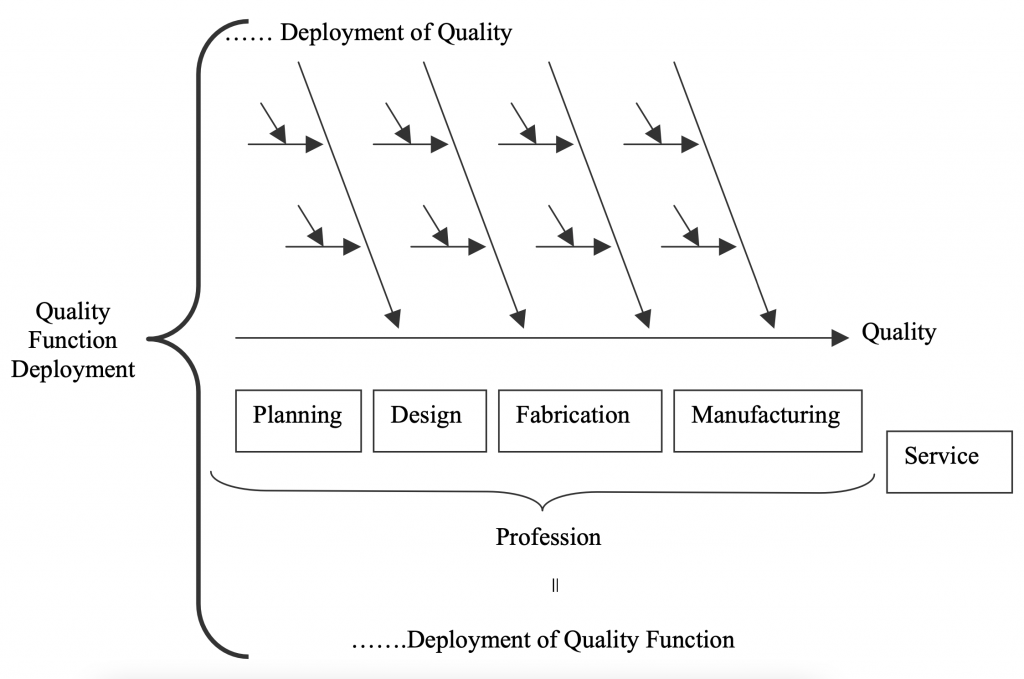
There were many times in the past when QC process tables were not created until after the start up of production, but with the implementation of QFD, most companies have come to prepare them prior to start of production.
In contrast, under the narrow definition of QFD involving the deployment of business function, activities begin with deployment from higher levels of abstraction to concrete operations and the clarification of those operations necessary for quality assurance, as shown in Diagram “Narrow Definition of Quality Function Deployment”. If the objective is value assurance, for example, deployment would begin with the business activities necessary to value assurance.
The results of the deployment of business functions are used in the creation of a table of quality assurance activities and for the creation of quality assurance system diagrams. A matrix comprising a quality assurance item deployment table and a value assurance item deployment table can be used to determine what activities should be performed to achieve which objectives and is also extremely useful in the preparation of business operation manuals. For the service industry, especially, when services are provided by the provider himself, this kind of business function deployment is an essential item and has a wide variety of uses in fields involving intangibles for which metrics are difficult to devise.
